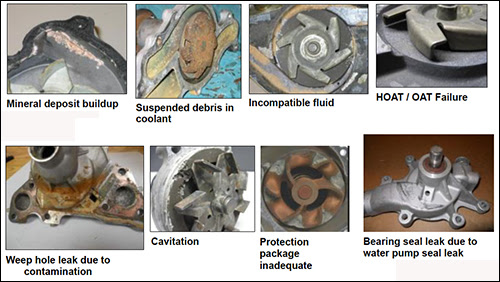Introduction
Cooler System Failures a vital role in maintaining temperature stability across a wide range of industrial applications, from manufacturing processes to HVAC systems. They help prevent overheating, enhance energy efficiency, and protect valuable equipment. However, like any mechanical system, cooler systems are susceptible to failure, which can lead to expensive downtime, decreased productivity, and potential damage to surrounding machinery. Understanding the various causes of cooler system failures, recognizing the early warning signs, and knowing how to take corrective actions are crucial for minimizing the impact of such failures. This guide delves into the common reasons behind cooler system failures, how to spot them early, and what steps can be taken to maintain system reliability and efficiency.
Causes of Cooler System Failures
Clogged or Dirty Components:
- Dust, debris, or sludge buildup in heat exchangers or pipes reduces heat transfer efficiency.
- Improper water treatment can lead to scaling and fouling, impairing system performance.
Mechanical Wear and Tear:
- Over time, components like pumps, fans, and seals experience wear, leading to inefficiencies and eventual failure.
- Vibrations or misalignments can accelerate degradation.
Improper Maintenance:
- Neglecting regular inspections and cleaning can lead to undetected issues escalating into major failures.
- Use of substandard spare parts during repairs may compromise system integrity.
Overloading or Operational Mismanagement:
- Operating the cooler beyond its capacity leads to stress on components, increasing failure risks.
- Incorrect coolant levels or improper flow rates can hinder performance.
Environmental Factors:
- Corrosion due to exposure to harsh chemicals or moisture.
- Extreme temperatures or sudden fluctuations can cause thermal stress.
Poor System Design:
- Inadequate sizing of the cooler system for the application can lead to inefficiencies and frequent breakdowns.
- Lack of redundancy in critical applications increases the risk of total failure during peak demand.
Electrical Issues:
- Faulty wiring or electrical components like capacitors, relays, or motors can disrupt system operation.
- Power surges or inconsistent voltage can damage sensitive electrical parts.
Aging Systems:
- Older systems face a higher risk of failure due to outdated components and technology.
- Materials used in older coolers may be more prone to corrosion or fatigue over time.
Warning Signs of Cooler System Failures
Reduced Cooling Efficiency:
- The system struggles to maintain desired temperatures, indicating clogged or failing components.
Unusual Noises:
- Rattling, buzzing, or squealing sounds from fans, pumps, or other components suggest mechanical issues.
Leaking Fluids:
- Visible leaks from the cooler indicate worn seals, damaged tubes, or improper connections.
High Energy Consumption:
- A sudden spike in power usage points to inefficient operation or failing components.
Temperature Fluctuations:
- Inconsistent cooling output could signal issues like low refrigerant levels or failing heat exchangers.
Frequent Shutdowns or Alerts:
- Automated systems triggering alarms or shutting down indicate severe underlying problems.
Vibration Issues:
- Excessive vibrations indicate loose components, misalignments, or worn bearings.
Abnormal Smells:
- Burning smells may signal electrical issues, while musty odors could indicate mold or bacterial growth in cooling towers.
Discolored Coolant or Fluids:
- Cloudy or rusty coolant suggests contamination or corrosion within the system.
What You Can Do About Them
Preventive Maintenance:
- Schedule regular inspections and cleaning to avoid buildup and detect early signs of wear.
- Ensure proper water treatment to prevent scaling and corrosion.
Monitor and Record Performance:
- Use monitoring systems to track performance metrics like temperature, pressure, and energy consumption.
- Analyze trends to predict potential failures before they occur.
Timely Repairs and Replacements:
- Address minor issues promptly to prevent them from escalating.
- Replace worn or damaged components with high-quality parts to ensure longevity.
Optimize Operating Conditions:
- Avoid overloading the cooler by adhering to manufacturer-recommended limits.
- Maintain optimal coolant levels and flow rates for consistent performance.
Invest in Upgrades:
- If your system is outdated, consider upgrading to newer, more efficient technology.
- Add smart sensors and IoT-based systems for real-time monitoring and predictive maintenance.
Conclusion
While cooler system failures are an inevitable part of any machinery’s lifespan, their impact can be significantly reduced with proactive maintenance and early intervention. Identifying common failure causes, such as mechanical wear, clogged components, or refrigerant issues, and recognizing key warning signs like unusual noises, leaks, and temperature inconsistencies, is crucial for avoiding unexpected breakdowns. By implementing routine inspections, using advanced monitoring tools, and investing in staff training, industries can extend the life of their cooler systems and improve operational efficiency. Additionally, having a well-prepared emergency response plan and backup cooling solutions ensures that any failure can be addressed swiftly, preventing costly downtime.

